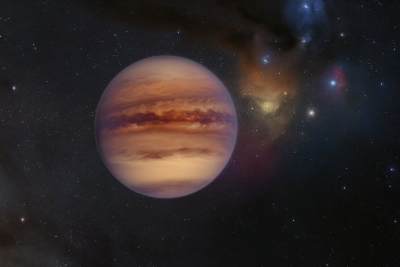
Elusive cosmic objects with masses comparable to those of planets in our solar system, rogue planets do not orbit a star, but instead roam freely on their own. While not many of these rogue planets were known until recently, a group of astronomers have just discovered at least 70 new rogue planets in our galaxy- the largest group of rogue planets ever discovered.
As rogue planets are far away from any star that can illuminate them, it is nearly impossible to image them. The team of researchers involved in this discovery, which was published in December 2021 in Nature Astronomy, utilised the fact that these planets are hot enough to glow in the few million years after their formation. Using sensitive cameras on super large telescopes, these can thus be detected.
Decades of data
Using two decades of data from a number of telescopes, both ground based and those in space, the team were able to measure the tiny motions, the colours and luminosities of millions of sources in a large area. These measurements then allowed them to identify the faintest objects in the region, thus spotting the rogue planets.
The study, which marks a grand success for the collaboration of ground-based and space-based telescopes, also suggests that there could be more of these nomadic planets that have proved to be elusive so far.
Mystery remains
By studying these starless planets, scientists might be able to figure out how these mysterious rogue planets form. While some believe these planets could have been kicked out from their parent system, and others think they are formed from the collapse of a gas cloud that doesn’t lead to the formation of a star, the actual mechanism by which they are formed remains unknown.
Even though our current technology has enabled scientists to find at least 70 new rogue planets with mass comparable to Jupiter, it is found wanting to study them further. Greater advances in technology would certainly be key to unlock the entire mystery of rogue planets.
Picture Credit : Google




